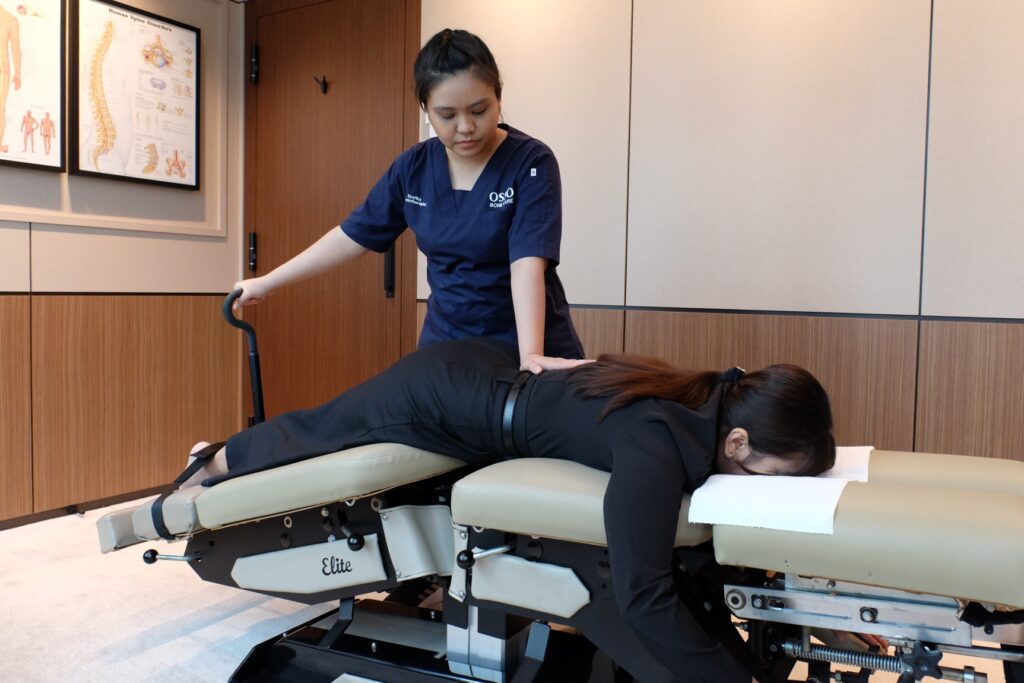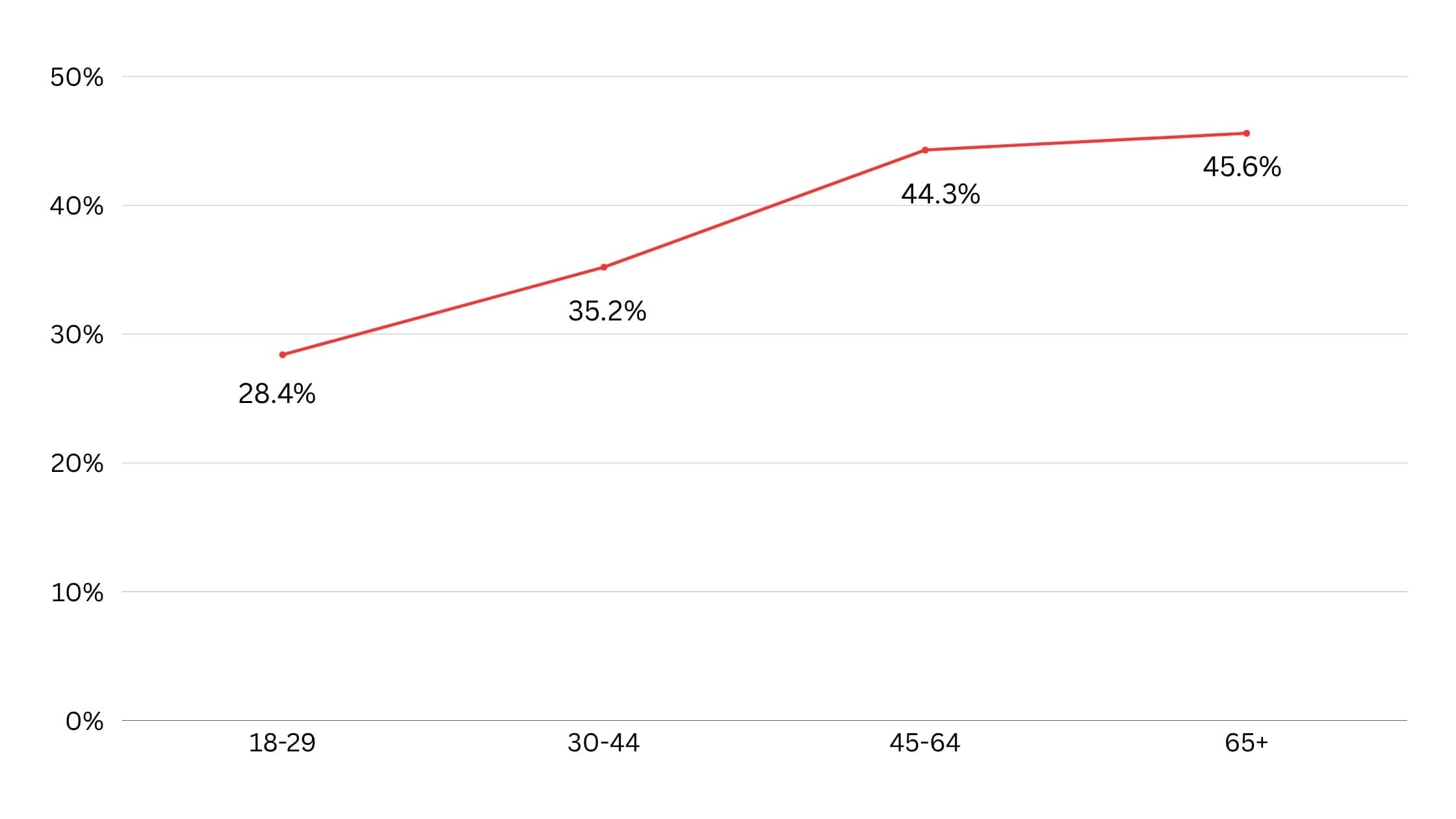Does Everyone Get Degenerative Disc Disease as They Age?
Is back pain a guaranteed part of growing older? Or is “degenerative disc disease” just an intimidating label for something more common and manageable?
What Is Degenerative Disc Disease?
Despite the name, degenerative disc disease (DDD) isn’t really a disease. It’s the natural wear and tear that happens to the discs in your spine as you age. These discs act like little cushions between the bones in your back. Over time, they can dry out, flatten, or develop tiny tears, making them less able to absorb shock or support your movements.
If those changes lead to pain, stiffness, or nerve irritation, that’s when it becomes more than just a part of aging; it becomes symptomatic DDD.
Lower Back Pain as You Get Older
While low-back pain can occur at any age, the risk increases as you get older; up to 75% of people over age 60 have lower back pain. It can interfere with daily life and may even lead to disability. The most common cause of low-back pain is arthritis of the spine, which happens when the joints in the spine deteriorate over time.
Most people will show signs of disc degeneration on imaging even if they’ve never had a single episode of back pain. It’s like wrinkles or grey hair: a normal part of the aging process.
But not everyone experiences symptoms. In fact, some people with disc changes discovered on an MRI or screening feel totally fine. So having “degeneration” on a scan doesn’t always mean you’ll be in pain. Depending on how healthy and active you are, pain can be more or less likely.
What’s Normal and What Isn’t?

There’s normal age-related discomfort and then there’s abnormal or concerning back pain.
Normal Back Pain with Age
Mild, occasional back pain is incredibly common, especially after the age of 40. It’s often linked to natural wear and tear in the spine, reduced muscle tone, and changes in posture or flexibility. Here’s what usually falls into the “normal” category:
- Stiffness in the morning that gets better after movement
- A dull, achy pain in the lower back after long periods of sitting or standing
- Pain that responds well to gentle stretching, rest, heat/ice, or pain relief pills
- Soreness after physical activity, especially if you’re not regularly exercising
- General fatigue or tightness in the back muscles
These are typically caused by muscle strain, mild disc dehydration, or postural stress. While not pleasant, these symptoms don’t usually point to serious issues and can often be managed with lifestyle changes and basic care.
When Back Pain Is Abnormal and Needs Attention
Some signs may indicate that something more serious is going on like degenerative disc disease (DDD), arthritis, spinal stenosis, or even nerve compression. Watch out for:
- Pain that radiates down the leg or arm (possible nerve involvement)
- Numbness, tingling, or weakness in limbs
- Pain that doesn’t go away or worsens over time, especially if it’s not linked to activity
- Pain that interrupts sleep or wakes you up at night
- Sudden sharp pain when bending, twisting, or lifting
- Significant loss of mobility or balance
Can You Age Without Back Problems?
Yes, absolutely. Many people age with disc degeneration and never know it. Just like how you might have a few creaky joints but still move fine, your spine can have changes that don’t cause any discomfort.
Staying active, keeping your core strong, and avoiding bad habits like slouching or smoking can help reduce the chances of pain even as the spine naturally ages.
What Are the Symptoms of DDD?
When symptoms do show up, they’re usually in the neck or lower back. Common signs include:
- Dull, persistent back pain
- Pain that worsens when sitting or bending
- Occasional shooting pain or numbness down the legs or arms
- Stiffness, especially after staying in one position too long
The symptoms often come and go—and for many people, they’re manageable without invasive treatment.
How Do You Know If You Have DDD and Not Arthritis?
DDD mainly involves the intervertebral discs, the soft, cushion-like pads between your spinal bones. As these discs lose hydration and shrink, they may bulge, crack, or collapse leading to pain.
Spinal arthritis, particularly osteoarthritis, affects the facet joints in your spine. These are the small joints at the back of your vertebrae that help control movement. With age or wear, the cartilage here breaks down, leading to inflammation and bone-on-bone friction.
The Difference in Pain Between Degenerative Disc Disease vs Arthritis
DDD pain is often due to disc-related issues like nerve compression or disc instability. It’s usually localized to the lower back or neck but can radiate if a nerve is pinched.
Arthritic pain tends to feel more achy and stiff, especially in the morning or after periods of inactivity. Movement may actually loosen things up.
Can You Have Both?
Absolutely. In fact, many people over 50 do. Degenerating discs can lead to increased stress on the facet joints, which in turn develop arthritis. This is sometimes called spondylosis, a catch-all term for spinal wear and tear.
Who’s More Likely to Get Degenerative Disc Disease?
Genetics
Some people are simply born with discs that wear out faster. Research shows that if your parents or siblings have a history of back pain or disc issues, your chances of developing similar problems are higher, even if your lifestyle is relatively healthy. Genes can influence the shape, structure, and resilience of your discs.
Lifestyle Choices
Smoking reduces oxygen and nutrient flow to your discs, accelerating degeneration. Poor posture, especially slouching while using a laptop or smartphone, adds stress to your spine daily. Obesity also increases the load on your lower back, making it more vulnerable to wear and tear. Even a sedentary lifestyle, like sitting for long hours without movement, weakens the core and back muscles that support your spine.
Physically Demanding Jobs
Work that involves heavy lifting, repetitive twisting, or frequent bending can stress the discs beyond their limit. Over time, these microtraumas add up, speeding up disc wear. Construction workers, warehouse staff, healthcare workers, and even hairdressers often fall into this high-risk category due to the physical demands of their jobs.
Previous Back Injuries
A slipped disc or strain from years ago can leave structural weaknesses that accelerate disc breakdown. Scar tissue, poor healing, and altered body mechanics after an injury may all contribute to uneven pressure on the spine.
Gentle Chiropractic for Degenerative Disc Disease For Adult and Seniors

Many older adults worry about spinal manipulation being too forceful. That’s where gentle chiropractic techniques come in. These low-force adjustments are tailored to aging bodies, focusing on improving joint movement, reducing nerve irritation, and relieving muscle tension—without aggressive twisting or cracking.
Activator Method – Low-Force and Highly Precise
The Activator Method uses a handheld instrument to deliver quick, low-force impulses to specific areas of the spine. This technique avoids the twisting or cracking often associated with manual adjustments, making it especially suitable for patients with degenerative disc disease. The precision and gentleness of the activator reduce stress on already weakened discs while promoting spinal alignment and mobility.
Drop-Table Adjustments – Comfortable and Targeted
Drop-table adjustments involve a specialized chiropractic table with segments that gently drop during the adjustment. This allows gravity to assist in the correction with minimal force. The technique enables chiropractors to realign the spine without causing unnecessary strain on degenerated discs, making it a comfortable and effective option for individuals with DDD.
Spinal Decompression Therapy – Relieves Pressure and Supports Disc Healing
Spinal decompression therapy is a non-invasive treatment that gently stretches the spine to relieve pressure on degenerated discs. This creates a negative pressure within the disc, encouraging the flow of oxygen, water, and nutrients into the affected area. Over time, this can help rehydrate the discs, promote healing, and even slightly restore disc height—making it an excellent complementary therapy for managing DDD.
Most importantly, gentle chiropractic avoids the potential downsides of long-term painkillers or surgical interventions, which may not be ideal for people with underlying health conditions.
Let Us Help Recover Your Spine as You Age at Osso Bone Care
Whether you’re 25 or 75, chiropractic care offers benefits beyond back pain relief.
Almost everyone’s spinal discs will age, just like skin or joints do. But degenerative disc disease isn’t a guarantee of pain or disability. With the right care, knowledge, and habits, you can stay mobile, strong, and pain-free for years to come. Let us help you relieve pain and take precautions for the future with expert chiropractic treatment.

